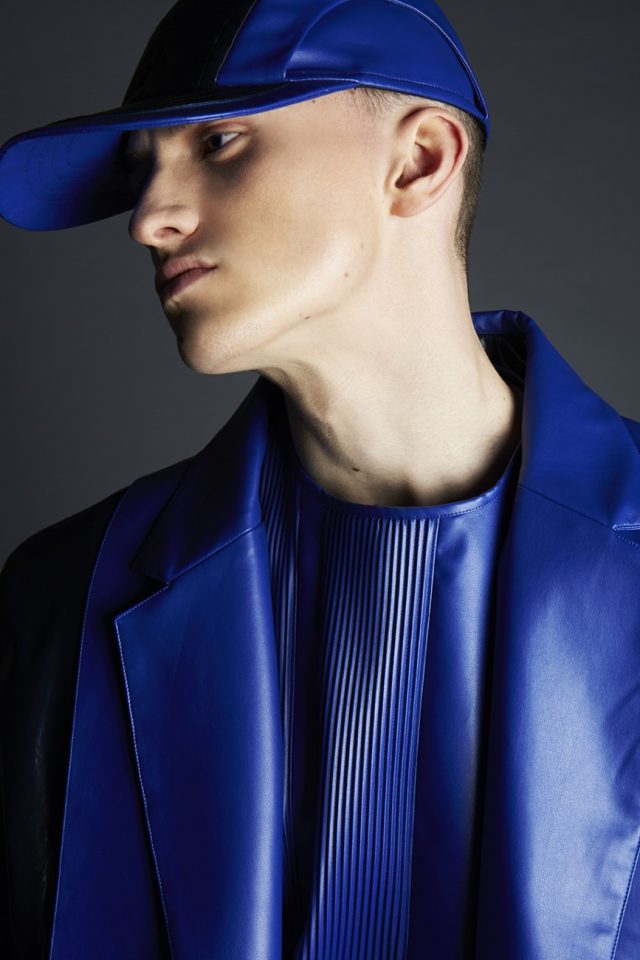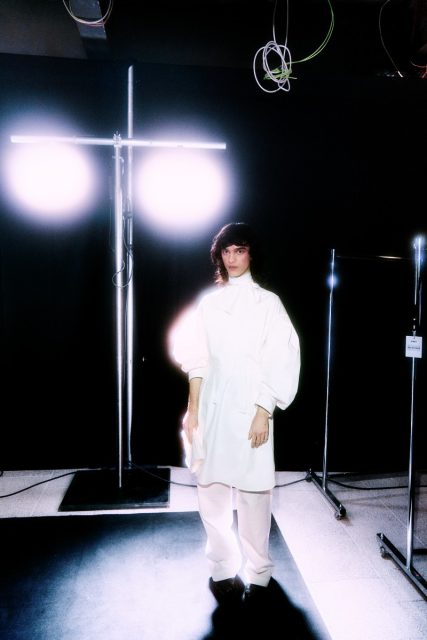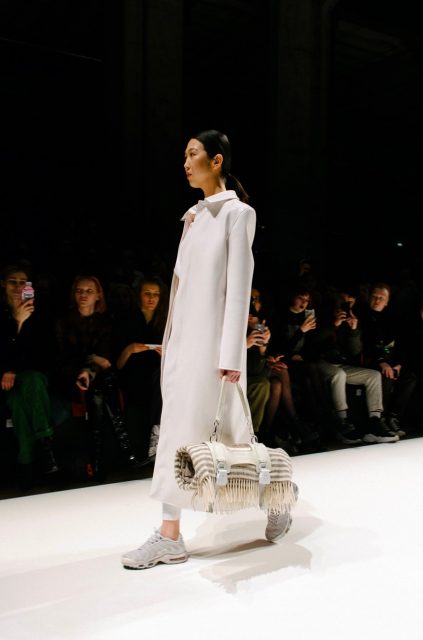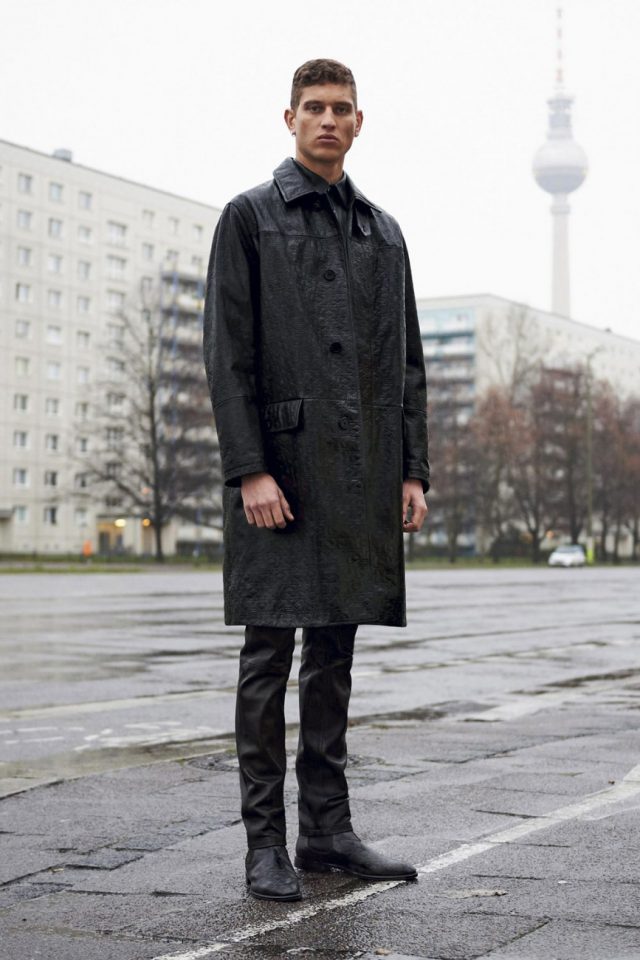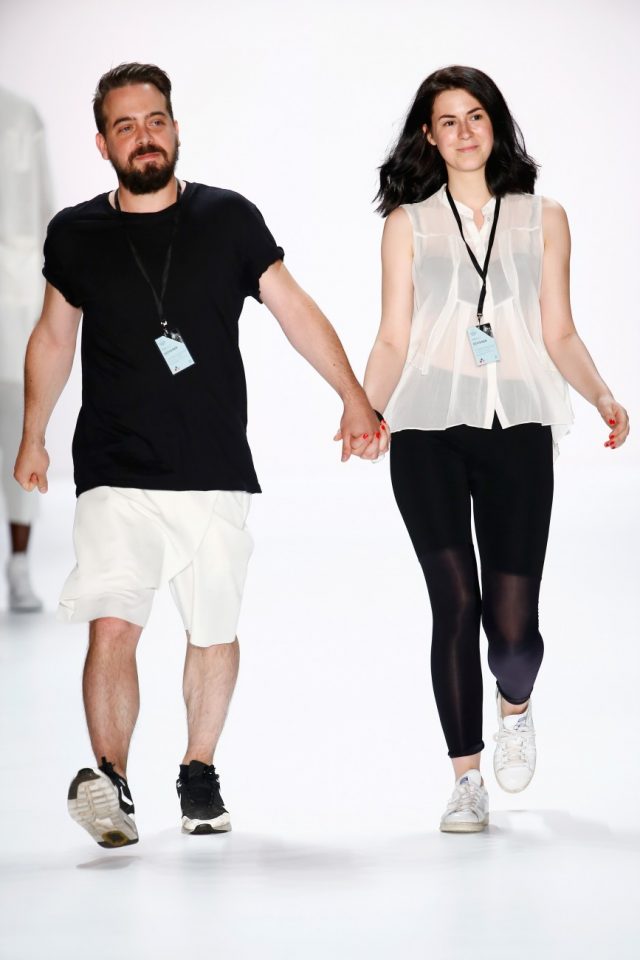 via Renato Souza
via Renato Souza
Designers travelling to show their collections is hardly a novelty. Recent events, such as Hedi Slimane’s announcement of the partial presentation of the Saint Laurent A/W16 collection in Los Angeles, have only served to prove that internationally acclaimed fashion need not be restricted to the geographical confines of ‘The Big 4’.
Mariana Jungmann, a London-based designer, made her Berlin debut this fashion week, a perhaps unexpected move from a designer hotly-tipped by Wonderland and iD on account of her London presentations. On the eve of her show, we chatted about her coming to the city, the state between sleep and wakefulness and ask: who is the Mariana Jungmann woman?
You’re based in London, completing your masters at LCF and having previously shown during London Fashion Week. What inspired your decision to come to show in Berlin?
They just asked me very nicely and I couldn’t say no… I’m kidding.
The people behind Mercedes-Benz Fashion Week Berlin came to London and saw my work there. They approached me and asked whether I’d want to show in Berlin. I think of it as such a cool city, so I thought, “of course I do!” My team and I were preparing to work on the London schedule, which takes place a month later, so deciding to come to Berlin meant having four weeks less!
Did choosing to show in Berlin have an impact of the creative process behind this collection?
No, it didn’t affect the way that I created the collection, but it certainly affected the logistical side of things and the ways in which my team had to work. We just had to figure it out really. We work in a very organised manner, so it was just of case arranging and working to set deadlines. We came here with no compromises, so it all worked out.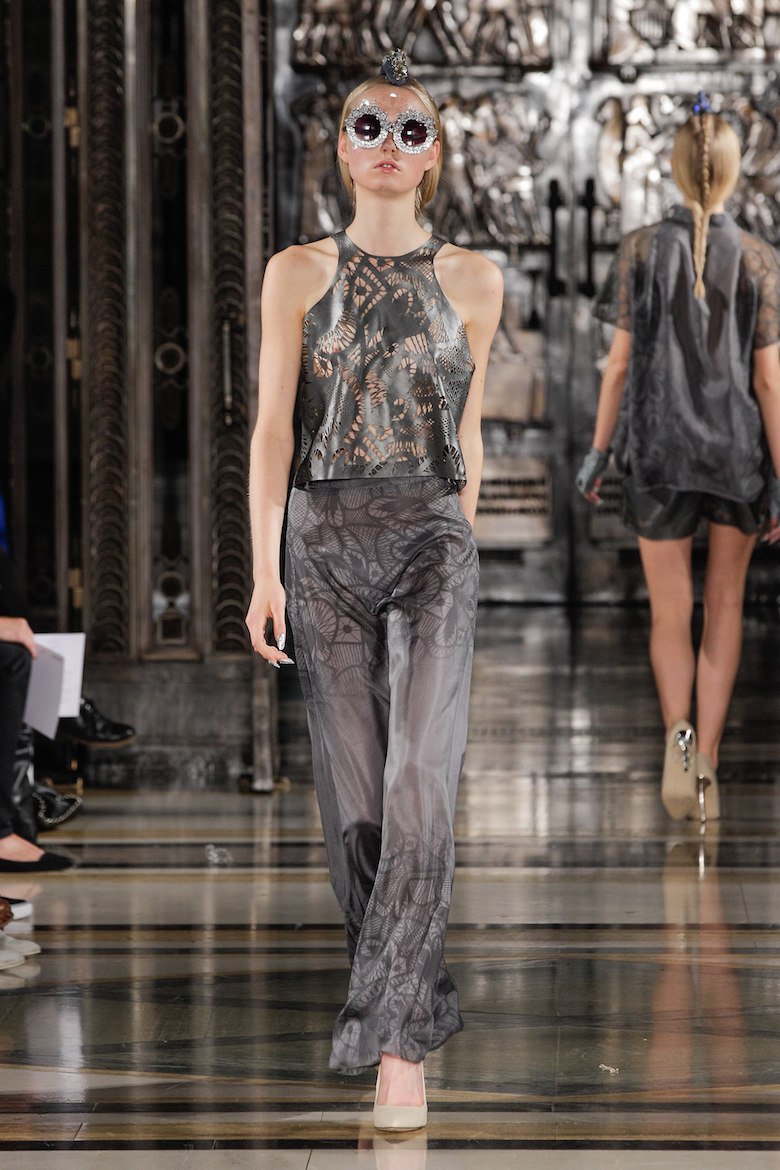 S/S 15 ‘Yemanja’
S/S 15 ‘Yemanja’
London has a much greater global reach than Berlin; from a designer’s perspective, how do the two cities differ in what they can offer?
It feels much more relaxed here, almost as if you’ve entered a familial atmosphere. In London, it’s a much more full on, stressful experience… which is good! I love the craziness of it, but I’m really enjoying this city’s pace. I also wanted to see how a Berlin audience reacts to my work. […] You don’t necessarily need to be exposed to so many people to get what you want.
You’re renowned for your focus on lacework. How did your interest in the fabric and its rich history come about?
Well, this particular kind of lace is very traditional in my native Brazil; I grew up seeing it in my home and [all around me], it’s a part of my most treasured memories. I eventually learned the production technique and decided to do some research; I’ve now been doing that for 10 years! It’s something I truly love, finding new stiches or discovering new elements of its story, as well as supporting the community behind it. It inspires my entire body of work.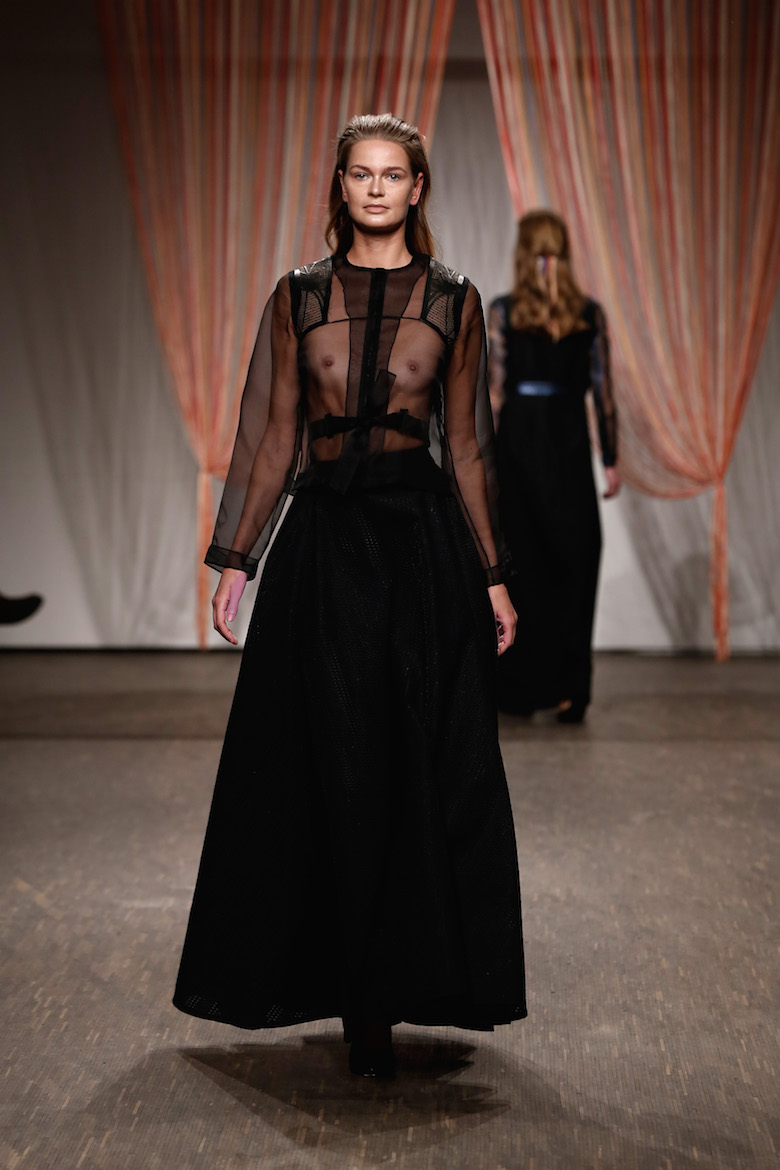 A/W 16/17 ‘Deshecho’ via John Phillips/Getty Images for Mariana Jungmann
A/W 16/17 ‘Deshecho’ via John Phillips/Getty Images for Mariana Jungmann
Since lace has such a wealthy history in a variety of cultural contexts, where do you typically begin in researching for a collection?
When I’m working on one collection, I always have an eye on the next, looking around for inspiration. I always manage to find something that lights up my mind. In previous collections, it has been Yemanjá, a goddess of Candomblé culture, and then of course there was the ‘Hypnagogia’ collection. Generally, I begin with the women for whom I design; I always have them in mind. With this collection, […] thoughts immediately turned to the most famous female artist in history, Frida Kahlo. Her story, having an accident in her youth resulting in a broken spine, but refusing to allow that to jeopardise her future, reminded me of a sculptor called Monica Piloni. In her work, she breaks the body. While the two may be different, there is an overlap; they’re both successful female artists, strong and determined, just like the women I design for.
Would you say that a raw feminine strength is the key inspiring force across your work?
Yes, I’m mostly inspired by women. It’s a focal point of my brand. The lacemakers are usually women, often fighting for their survival yet producing something so intricate and delicate. That in itself is a great inspiration.
These contrasts between intricacy, delicacy and strength manifest themselves clearly in your work. How does your exploring of these relationships affect the image of femininity that you present?
I think that every woman is full of paradoxes. You can be very feminine, but still be bold. I think it’s a great mistake to think that in order to be a powerful woman, one must dress in a masculinised manner. It’s far from the case. You can be very powerful in a dress; it’s all about how you feel. Women can be strong yet feminine, sexy yet fierce and sharp. That’s the image I want to portray; you can be an array of different things simultaneously. This is what makes you who you are. A/W 16/17 ‘Deshecho’ via John Phillips/Getty Images for Mariana Jungmann
A/W 16/17 ‘Deshecho’ via John Phillips/Getty Images for Mariana Jungmann
Your work evidently requires great intricacy and precision, as seen in pieces that transpose traditional lace patterns onto new materials, namely leather. Could you perhaps talk us through some of your employed techniques? Were there any particular difficulties that you had to overcome in mastering them?
With regard to the lace itself, I hand-draw the patterns for each garment. We have a strong focus on sustainability, trying to generate less waste and to recycle. By drawing each pattern to precise size and scale, we go some way in achieving this. [The lacemakers] work for hours by hand, so I’m not just going to throw away pieces of their fabrics; it hurts my soul to think of that! While drawing the patterns, I thought that I could perhaps transform them into vectors, so I drew the entire pattern on Illustrator and that was the beginning of my relationship with the laser-cut leather pieces. I work with a very soft lambskin and, in order to make it look similar to the lace, it requires extreme intricacy and precision. A single top can take up to four hours of cutting, and this is using a fast machine.
Well I can also imagine that, if it’s such buttery leather, then…
… it breaks! We had to find a way that ensured that it wouldn’t break and we eventually developed a technique for that. But we then found that people could get their fingers stuck in the garment, so we found a way to resolve that without compromising on the essential visual impact. The entire process has included a lot of research, a lot of experimenting and much trial and error. Such is the time spent researching, that, with this collection, which makes use of Swarovski crystals stitched onto the lace, my research into how to perfect the technique began last May!
So your conceptualising of a collection isn’t limited to the 6-month period between one and another?
No, I start on one collection while working on another. I always have at least 3 collections going on in my mind, the past, the present and the future. But I don’t think a designer works exclusively within a single block of time; we have a different mind-set, we’re a special breed!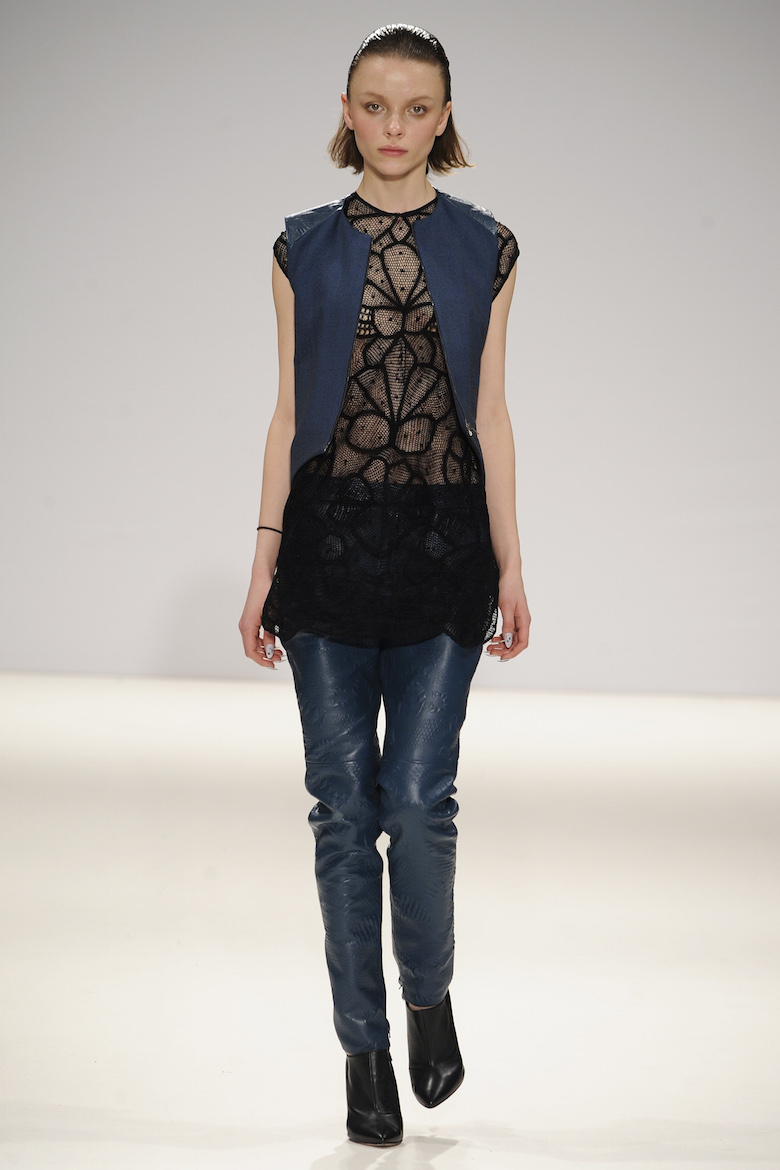 A/W 15/16 ‘Hypnagogia’ via Etienne Tordoir
A/W 15/16 ‘Hypnagogia’ via Etienne Tordoir
Your A/W15 collection was entitled ‘Hypnagogia’, referring to the liminal space between sleep and wakefulness, a realm both vivid and abstract. Would you say that this is a notion relevant across your entire corpus?
I like feelings and abstraction. Across Kahlo and Piloni’s work, there’s a distinct abstractedness present, it’s something that is always around. Working with an emotion can be extremely complex, for example, with the ‘Hypnagogia’ collection, it was really difficult to grasp [the nuance]. It all started by wondering about what this phenomenon was. Is there a word for this state one enters right before falling asleep? On researching, I found it so incredible that there is a range of feelings and images for this precise notion. These little things are what set off lightbulbs in my mind. Also, I love telling stories, […] [such as those of the] slaves in Brazil, who used to embroider for their masters. Bit by bit, they would keep small parts of their work for themselves, hiding it under their skirts, eventually creating an entire garment that they could sell and buy their freedom. I want to voice my perspectives on these stories through my work.
With the influence of powerful, creative women being so prominent, what is the archetype of the fashionable woman that you try to portray?
Hm… that’s a tricky one! I have a wall in my studio, covered with pictures of women that embody ‘The Mariana Jungmann Woman’. They are inspiring, they are commanding, yet delicate and soft. The Mariana Jungmann woman is not the prettiest woman that you’d pass on the street, but she’s captivating, someone that you would aspire to be. She is aspirational, caring about details, her career, where her garments come from and about the world in which we live. She is complete. A/W 16/17 ‘Deshecho’ via John Phillips/Getty Images for Mariana Jungmann
A/W 16/17 ‘Deshecho’ via John Phillips/Getty Images for Mariana Jungmann
What can we expect from tomorrow’s presentation?
A LOT of crystals! We hand-embroidered over 10,000 crystals across the collection. It’s also quite colourful when compared with my previous work; I usually rely on a palette of earthy tones, but to talk about Frida Kahlo without touches of red or royal blue is impossible. […]
Since you’ve already told us that you work with multiple collections on the go, what can we expect from Mariana Jungmann in the future?
Now, that would be telling!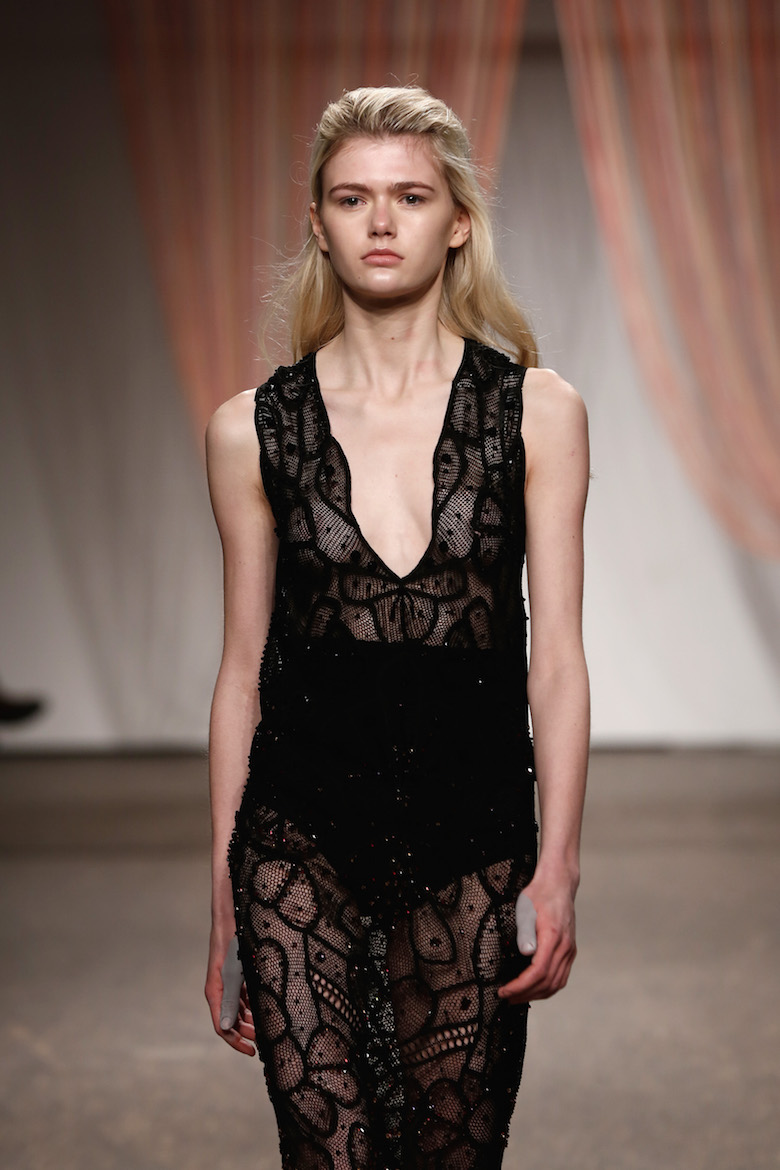 A/W 16/17 ‘Deshecho’ via John Phillips/Getty Images for Mariana Jungmann
A/W 16/17 ‘Deshecho’ via John Phillips/Getty Images for Mariana Jungmann
